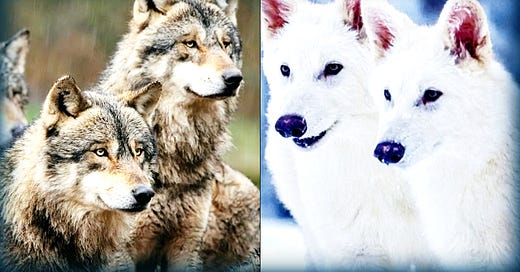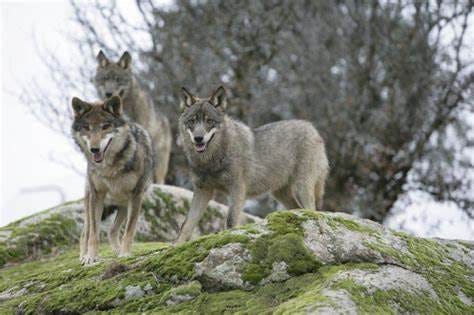CRY WOLF: As Lupine Populations SURGE in Europe, a Bio-Tech Firm Claims To Have Brought Back to Life the Extinct Huge Dire Wolves
"The wolf is the arch type of ravin, the beast of waste and desolation." - Theodore Roosevelt
Just because we can do something, does it mean that we have to do it?
For thousands of years, wolves were a bane to the evolving human populations, and as we became the dominant species in the planet, some wolves turned into dogs and became entwined with out way of life, and the others were fated to obliteration – or were they?
While the Lupine populations have made a surging comeback across Europe, scientists have had a controversial idea: to de-extinct the huge Dire Wolves of old.
A new report found that wolf populations have increased in 19 European countries, from Austria and Belgium to Italy, France, Germany and Eastern Europe.
The Telegraph reported:
“After centuries of being trapped, shot, poisoned and maligned, in the past decade the wolf population has increased by 58 per cent, which means that there are now more than 21,500 in the continent’s woods, mountains and, increasingly, towns and cities.
[…] The trend is all the more surprising ‘because Europe appears at first as an unlikely place for a large carnivore to recover’, the report said, given that the continent is intensively farmed, heavily urbanized and home to about 450 million people.”
Wolves are thriving because of legal protection, rural depopulation and the proliferation of prey species such as deer and wild boar.
Professor Luigi Boitani, Italy’s foremost wolf expert: “Intense agriculture on the plains is enough to feed Europe’s 500 million people. The upland areas have been recolonized by a lot of deer and wild boar and the wolves are taking advantage of that.”
Farmers and shepherds have reason to worry: wolves kill around 56,000 domestic animals in the EU each year.
Michele Mordini, a farmer in Tuscany, lost 26 of his 50 sheep killed by a pack of wolves last month.
“‘The pregnant ewes that survived have aborted because of the stress, so the loss is even greater’, he said. ‘These days there are too many wolves and they are coming too close to villages. They are no longer afraid. I have two kids, the youngest is seven. If a child of seven comes up against a pack of wolves, how is that going to end?’”
The EU decided last month to downgrade the species’ level of protection, from ‘strictly protected’ to ‘protected’.
It’s now easier to hunt and kill wolves, and we’re in for a bloody autumn and winter.
In the meantime, a US Bio-Tech company Colossal Biosciences has claimed to have brought back the extinct dire wolf, 10,000 years after it was last seen roaming the Earth.
This is the same company with the goal of bringing back the extinct woolly mammoth by 2028, which boasts investors like Tom Brady, Tiger Woods, Paris Hilton and Peter Jackson.
ABC News reported:
“[Colossal’s chief scientist Beth] Shapiro’s team had to extract more dire wolf DNA from two existing fossils to better sequence the animal's genome. From there, Colossal elected to use a close relative of the dire wolf as the base.
‘We've taken a gray wolf genome, a gray wolf cell. which is already genetically 99.5% identical to dire wolves because they're very closely related’, Shapiro said. ‘And we've edited those cells at multiple places in its DNA sequence to contain the dire wolf version of the DNA’."
“Two of the dire wolves were born late last year, while the third arrived in early 2025. The older pair are named Romulus and Remus after the mythological founders of Rome, who are traditionally depicted being suckled by a she-wolf. The youngest one is named Khalesi after a character from the fantasy show ‘Game of Thrones’, in which dire wolves play a major role. All three live in a secure 2,000 acre nature preserve at an undisclosed location.”
Dr. Robert Klitzman, a bioethicist and geneticist at Columbia University: "So, one wants to be careful if you're mucking around with genes, that there may be things we don't understand," Klitzman told ABC News. ‘You may produce a wolf that's twice as ferocious. You may produce a super wolf’.”








They have introduced a non-Native breed of wolves in the Forbes Park area of Colorado,near Fort Garland